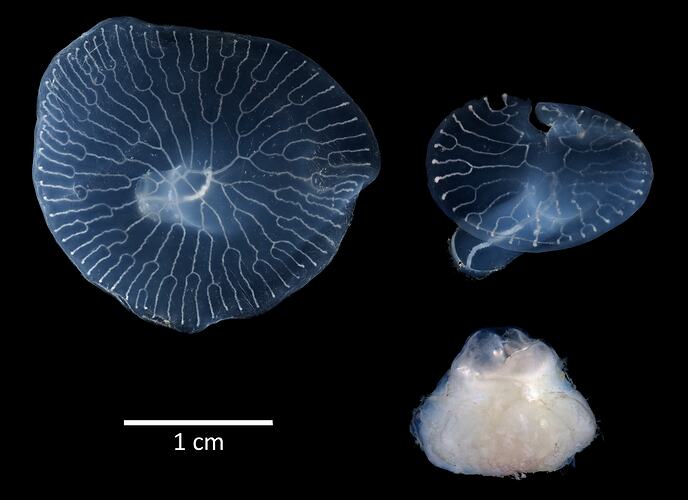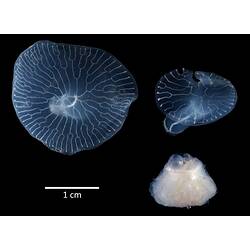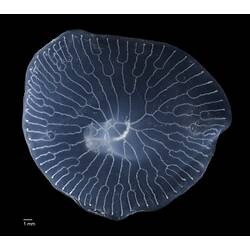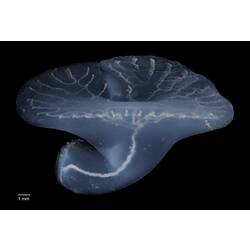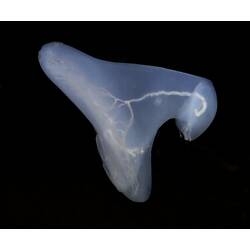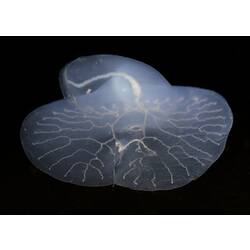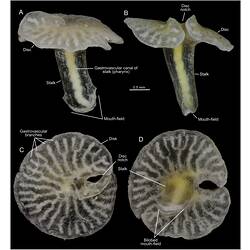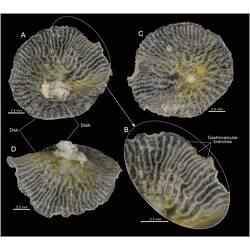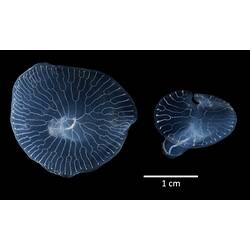General Description
Dendrogramma is a small (2 cm) soft orange sphere, made up of a gas float and numerous small tentacles. It has distinctive stalked structures (resembling mushrooms) called bracts that bud off the main colony with a distinctive branching pattern inside them.
Biology
Dendrogramma is a colonial animal with a gas-filled float. It uses this to provide buoyancy and hold itself a few centimetres off the sea floor. The colony has numerous individual parts, specialised for feeding, reproduction and other roles. It most likely feeds on small invertebrates and plankton in the deep sea. The pattern of branching lines in the mushroom-shaped structures attached to the main body of the colony (bracts) inspired the genus name of Dendrogramma as they look like "dendrogram" diagrams used in evolutionary biology. The species name enigmatica was given becuase it was an enigma when it was described as it couldn't be placed in any known taxonomic group.
Distribution
Southern Australia.
Habitat
Deep sea, attached to seafloor. Known from depths of 400 m to 2700 m, most commonly found around 1000 m.
More Information
-
Animal Type
-
Fast Fact
Dendrogramma was so unusual, that when first found scientists could not identify where in the tree of life it belonged. DNA studies later showed it to be a relative of jellyfish.
-
Brief Id
A small orange sphere with distinctive rubbery 'mushroom' structures with branching patterns.
-
Colours
Orange, Translucent
-
Maximum Size
2 cm
-
Habitats
-
Diet
Plankton or Particles
-
Diet Categories
Plankton
-
Endemicity
-
Commercial
No
-
Depths
Deep ( > 30 m)
-
Water Column Locations
On or near seafloor
-
Taxon Name
-
Scientific Author
Just et al., 2014
-
Kingdom
-
Phylum
-
Class
-
Order
-
Suborder
-
Family
-
Genus
-
Species Name
enigmatica
